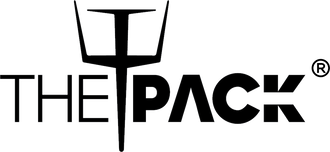
Insightful: Implicit or Unconscious Bias

LGBTQ+ Community Bias
Similar to implicit racial and gender biases, individuals may hold implicit biases against members of the LGBTQ+ community. This doesn't necessarily mean that these opinions are voiced outwardly or even consciously recognized by the beholder for that matter.
Rather, these biases are unconscious. A really simple example could be asking a female friend if she has a boyfriend, assuming her sexuality and that heterosexuality is the norm or default.
Instead, in this specific situation, you could just ask your friend if she is seeing someone. There are several other forms of implicit biases that fall into categories ranging from weight to ethnicity to ability that come into play in our everyday lives.

Racial Stereotypes
Unconscious racial stereotypes are a major example of implicit bias. In other words, having an automatic preference for one race over another without even being aware of this bias.
This bias can manifest in small interpersonal interactions and has broader implications in the legal system and many other important sectors of society.
Examples may include holding an implicit stereotype that associates Black individuals as violent, and as a result, you may cross the street at night when you see a Black man walking in your direction, without even realizing why you are crossing the street.
The action taken here is an example of a microaggression. A microaggression is a subtle, automatic, and often nonverbal, that communicate hostile, derogatory, or negative prejudicial slights and insults toward any group (Pierce, 1970). Here, crossing the street communicates an implicit prejudice, even though you might not even be aware.
Another example of an implicit racial bias is if a Latino student is complimented by a teacher for speaking perfect English, but he is actually a native English speaker. Here, the teacher assumed that simply because he is Latino that English would not be his first language.
Gender Stereotypes
Gender biases are another common form of implicit bias. Gender biases are the ways in which we judge men and women based on traditional feminine and masculine assigned traits.
For example, a greater assignment of fame to male than female names (Banaji & Greenwald, 1995) reveals a subconscious bias that holds men at a higher level than their female counterpart. Whether you voice the opinion that men are more famous than women is independent of this implicit gender bias.
Another common implicit gender bias regards women in STEM (science, technology, engineering, and mathematics). In the school setting, girls are more likely to be associated with language over math, whereas males are more likely to be associated with math over language (Steffens & Jelenec, 2011), revealing clear gender-related implicit biases that can ultimately go so far as to dictate future career paths.
Even if you outwardly say men and women are equally good at math, it is possible you subconsciously associate math more strongly with men without even being aware of this association.
Healthcare is another setting where implicit biases are very present. Racial and ethnic minorities and women are subject to less accurate diagnoses, curtailed treatment options, less pain management, and worse clinical outcomes (Chapman, Kaatz, & Carnes, 2013).
Additionally, Black children are often not treated as children at all, or not given the same compassion or level of care that is provided for White children (Johnson et al., 2017).
It becomes very evident that implicit biases infiltrate the most common sectors of society, making it all the more important to begin to question how we can work to remove these biases.
Legal System
Both law enforcement and the legal system shed light on implicit biases. An example of implicit biases functioning in law enforcement is the shooter bias – the tendency among the police to shoot Black civilians more often than White civilians, even when they are unarmed (Mekawi, & Bresin, 2015).
This bias has been repeatedly tested in the laboratory setting, revealing an implicit bias against Black individuals. Blacks are also arrested at disproportionally high rates, given harsher sentences, and Black juveniles are tried as adults more often than their White peers.
Black boys are also seen as less childlike, less innocent, more culpable, more responsible for their actions, and as being more appropriate targets for police violence (Goff, 2014).
Together, these unconscious stereotypes, which are not rooted in truth, form an array of implicit biases that are extremely dangerous and utterly unjust.
Work
Implicit biases are also visible in the workplace. One experiment that tracked the success of White and Black job applicants found that stereotypically White received 50% more callbacks than the stereotypically Black names, regardless of the industry or occupation (Bertrand & Mullainathan, 2004).
This reveals another form of implicit bias: the hiring bias – Anglicized‐named applicants receiving more favorable pre‐interview impressions than other ethnic‐named applicants (Watson, Appiah, & Thornton, 2011).
This article is sourced from: Simplypsychology.org. This transformative remix work constitutes a fair-use of any copyrighted material as provided for in section 107 of the US copyright law. “Implicit or Unconscious Bias” by Charlotte Ruhl is licensed under a Creative Commons BY-NC-SA 3.0 License – permitting non-commercial sharing with attribution.











